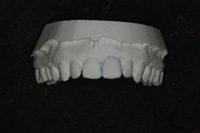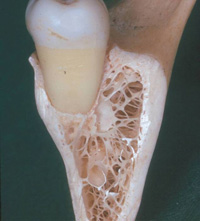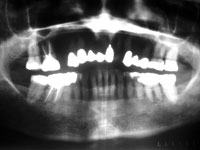 Who’s bringing the bagels tomorrow? In the vast majority of practices we observe, this is one of the few questions even remotely connected with staff accountability. If accountability and performance are an issue in your practice, you’ve got to recognize that—like a toothache—this is one problem that’s not going to fade away with a tincture of time and thoughtful neglect. Believe me, the longer the accountability/performance issue goes unchallenged, the more difficult the fix. So do yourself a favor. Dig your heels in, read what follows—which, in essence, is the start of a bold strategic plan—and give yourself the optimum shot at reaching your own vision of success. For the most trouble-free transition, step one is relatively easy to implement, as you’ll see in a moment.
Who’s bringing the bagels tomorrow? In the vast majority of practices we observe, this is one of the few questions even remotely connected with staff accountability. If accountability and performance are an issue in your practice, you’ve got to recognize that—like a toothache—this is one problem that’s not going to fade away with a tincture of time and thoughtful neglect. Believe me, the longer the accountability/performance issue goes unchallenged, the more difficult the fix. So do yourself a favor. Dig your heels in, read what follows—which, in essence, is the start of a bold strategic plan—and give yourself the optimum shot at reaching your own vision of success. For the most trouble-free transition, step one is relatively easy to implement, as you’ll see in a moment.
START BY DITCHING THE GO-NOWHERE STAFF MEETING
Granted, there’s much to be said for team members getting together and affably chatting through their morning coffee and goodies. But the shameless truth is that weekly breakfast-club staff meetings, more often than not, turn into either fun-for-all schmoozing sessions or free-for-all-attack-and-destroy missions, both of which rob precious time from the priorities of the practice. There’s a business to be run, and it simply can’t subsist on coffee and conversation alone.
If you’re lucky enough to have a team that truly gets along well, make sure that there are plenty of non-worktime opportunities during which everyone can enjoy each other’s company, such as an official lunch break in which doctor and staff bring in a pizza or go out together simply because they like to do so. In other words, building or maintaining interpersonal relationships with fellow team members is ideal, but cannot take place at the expense of practice responsibilities.
To the detriment of the practice, as well as the team member under attack and the team as a whole, the agonizing attack-and-destroy missions do much to step up the rate at which staff members zip through the ever-revolving door, leaving the practice to start over, again. Whether they’re characterized by fun or fighting, these staff meetings can be far more of a hindrance than a help.
Now that’s not to say that your team doesn’t need to meet at all. To the contrary, what I recommend is beginning-of-the-day meetings—typically 15 minutes—just to quickly review scheduled treatment, special needs or situations, and account balances for patients coming in that day. Dentistry, patient care, business…1,2,3, done.
CONTINUOUS IMPROVEMENT IN ACTION
Besides the quick meetings just described, you’d do well to initiate what I refer to as a “continuous improvement plan” for your practice, with planning meetings to be conducted once each month. But as important as the meeting, the agenda for that meeting will become a ready-reference framework for performance standards by which a practice should operate. (For a free copy of a sample agenda, call McKenzie Management, (877) 777-6151.)
If executed correctly, the “continuous improvement plan” meeting agenda and its resulting reports become an immediate and ongoing indicator of how the practice is doing in very specific, narrowly focused areas. Let’s take, for example, the hygienist, who will be asked to report the percentage of periodontal services to her hygiene production for the current month. Compared with the previous month(s) and the practice objective of 33%, these figures will serve as a yardstick by which the hygienist’s performance can be routinely measured.
Tailored specifically to your particular dental practice and its needs, this agenda should delineate certain practice objectives, along with which team member is responsible for each. In ticking off items from the agenda, the leader of the meeting—typically not the doctor—asks for reports from each staff member on specific issues. Case in point, the leader asks the scheduling coordinator to report the current month’s production and to compare that with the goal, as well as with last month’s production. The financial coordinator is then asked to report the current month’s collection as compared with last month’s collection and the practice goal for collection. In some practices, nobody looks at any of these numbers until year’s end, when it’s too late to reverse a downward trend. Once both of these coordinators have had to make such reports at the monthly planning meeting, and better understand that their jobs are interdependent, it’s a good bet that they’re both going to work a little harder—and with greater synergy—in the coming month to bring in numbers that will make each of them, and the practice, look better at the next meeting. And so it goes for each position and its major responsibilities.
At first glance, however, some worry that such reporting is like airing dirty laundry. They think that it’s not necessary or appropriate for the whole staff to hear about the success or shortfall of production or collection, or for everyone to know what percentage of emergency patients were converted to comprehensive exams, or the percentage of treatment accepted. But I can happily tell you that the formula works. It can be successful by:
- establishing specific numbers and indices as practice objectives
- discussing the strategies behind those objectives
- determining who will be accountable for each
- structuring a time frame in which each objective must be met.
In this way, every single member of the team not only gets to know the score, but how his/her performance affects the entire team and its goals. When using this planning agenda as recommended, each meeting becomes a highly effective conduit to continuous improvement and exceptional performance. That’s a win-win for your team members and your practice. It doesn’t get much better than that.
BEFORE ANY GOALS ARE SET
Your starting point must be factored into any short-term goals you’re about to set for your practice. For example, let’s say your patient retention is now at 57%. It’s clear that you can’t just blindly raise the bar to 90% or 95%, for that would be a prescription for failure. Instead, interim goals will need to be set, after it’s been determined why retention has been so low. System failure is the most common culprit, with patients falling through the cracks because there’s no one accountable for recall, or whoever is responsible doesn’t have the time or training to do it justice.
To turn this situation around, you’ll need to have a complete grasp of the problem. The days of not knowing how many patients you’re retaining are over. And just as important, before setting any long-term goals for your practice, you need to be absolutely certain that the individual up at bat for your recall system is given both the time and training to do the job right. The same, of course, goes for each position on your staff, like seeing to it that your scheduling coordinator understands how to schedule both doctor and hygienist to production goals; like making sure your financial coordinator knows how to handle patients who don’t pay; or how to get hundreds of thousands of dollars in unscheduled treatment on the books; and ensuring that hygienists are equipped with the verbal skills they need to sell periodontal care. In short, you must provide the job skills that will bring your staff to the level of performance your practice deserves —which brings me to the thorny subject of the business of your practice.
PUTTING EVERYONE TO THE TEST
In far too many instances, while dentists hold themselves to the highest professional standard, they establish no standard or specified expectations for their staff. It’s like jump ball every day for the staff and for you. Sorry, but that’s no way to run a business, and yes, your practice is a business. You might be recognized as the most highly skilled and compassionate dentist ever to treat the patients in your community. However, if your practice is not managed like the business it is, realization of your profitability potential will be severely limited. What a waste!
To eliminate the jump-ball mindset, you’ve got to set forth expectations for every job description, every task. And don’t cut corners here, Doctor. These job descriptions will not only be used as the basis for hiring, but for performance measurements as well. To put it bluntly, as a business, you need to put people to the test, routinely. That means testing the skills of a job candidate to see if they can, in fact, do the job. Trust me on this, experience counts, but it doesn’t guarantee any particular level of skill. If you decide to hire a candidate despite her inability to handle a particular task or set of tasks, make it clear that training will be provided, but that success in the job is contingent upon the ability to get up to speed on the task(s) in question.
But putting people to the test goes far beyond the hiring stage. Measuring employee performance should be conducted, at length, twice a year to determine the appropriateness of continued employment with the practice, as well as for any consideration of salary increase. For a more regular, less formal performance appraisal, the ideal vehicle is the “continuous improvement plan” meeting agenda discussed earlier. At the monthly meeting, each employee will report on the outcome of certain tasks for which they are responsible. The numbers, as we know, don’t lie, and they provide an excellent basis for accountability, continuous improvement, and exceptional staff performance.
CONCLUSION
Make no mistake. By demanding that your staff members stand and deliver—accountability and performance—you’re giving them the gift of success in their jobs, which ultimately will translate to success of the practice. There can be no better employee benefit.
Ms. McKenzie is a nationally known lecturer, author, and consultant to the Council on Dental Practice of the ADA. She is President of McKenzie Management and Associates Inc, which provides in-office analysis of the business, clinical, and hygiene departments; conducts on-site staff training; and offers a full line of educational management books, audiotapes, and videos. McKenzie Management’s online practice management is a highly innovative approach, through which practicemanagement-online.com actually monitors practice numbers and provides support for staff. Additionally, Ms. McKenzie’s 34 years of experience and expertise are now available as on-tap resources for the dental profession at The Center for Dental Career Development, which provides advanced business education to the dental profession as well as team-building retreats in La Jolla, Calif. For information on what any of these companies can do for your practice, call Sally toll-free at (877) 777-6151, and visit her web sites at: mckenziemgmt.com; practicemanagement-online.com; or dentalcareerdevelop.com.
 Who’s bringing the bagels tomorrow? In the vast majority of practices we observe, this is one of the few questions even remotely connected with staff accountability. If accountability and performance are an issue in your practice, you’ve got to recognize that—like a toothache—this is one problem that’s not going to fade away with a tincture of time and thoughtful neglect. Believe me, the longer the accountability/performance issue goes unchallenged, the more difficult the fix. So do yourself a favor. Dig your heels in, read what follows—which, in essence, is the start of a bold strategic plan—and give yourself the optimum shot at reaching your own vision of success. For the most trouble-free transition, step one is relatively easy to implement, as you’ll see in a moment.
Who’s bringing the bagels tomorrow? In the vast majority of practices we observe, this is one of the few questions even remotely connected with staff accountability. If accountability and performance are an issue in your practice, you’ve got to recognize that—like a toothache—this is one problem that’s not going to fade away with a tincture of time and thoughtful neglect. Believe me, the longer the accountability/performance issue goes unchallenged, the more difficult the fix. So do yourself a favor. Dig your heels in, read what follows—which, in essence, is the start of a bold strategic plan—and give yourself the optimum shot at reaching your own vision of success. For the most trouble-free transition, step one is relatively easy to implement, as you’ll see in a moment.










